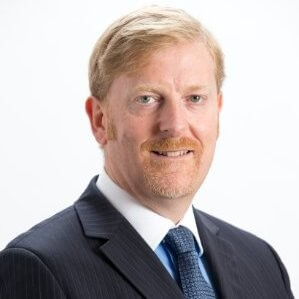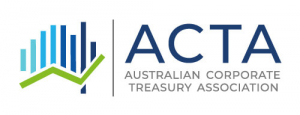NORMAL, NEW NORMAL, NEXT NORMAL – A CORPORATE TREASURY PERSPECTIVE
July 2022
Normal
/ˈnɔrml/
Typical, usual, or ordinary; what you would expect
Oxford English DictionaryNormal has been part of the economic lexicon for a long time. New normal and next normal are relatively recent additions. All forms of normality imply that economies settle into a steady state after being disturbed by shocks. The object of many futurists and other commentators is to predict the condition and structure of the economy in the new or next normality.
While this is an interesting form of speculation, it has limited value for corporate treasurers. Treasurers manage the financial risks of corporations to reduce earnings volatility; and they source, structure and allocate capital to minimise the cost of, and to maximise the return on, capital deployed. Even if a treasurer is convinced that a future new or next normality will be realised, in almost all cases they will not willingly put, and usually are prevented from putting, all corporate eggs into one basket. This is because financial risk management is about surviving and then prospering from whichever pathway is realised. It is not about treasurers (or anyone else) having to pick the correct path. Future speculated pathways to new or next normalities can be used by treasurers to inform the design of scenario analyses for long term strategy development, but they cannot be the base case when still in highly speculative form.
Normal, including new and next normal, must be more enduring than shocks to be “typical, usual, or ordinary”, and shocks must be not only temporary but relatively infrequent.
What do we observe in practice? There is substantial empirical evidence that shocks are more common than normal. For example, we observe two distinct and persistent phenomena in traded financial market prices:
- actual historical asset return distributions are not normal
- future distributions implied from actual current traded option prices are not normal
Return distributions in most asset markets are fat-tailed and asymmetric. As a result, the frequency of rare events is much greater in practice than normality predicts. If shocks are more frequent, new normal and next normal states are less enduring than otherwise and economies spend more time than expected reverting to, rather than being in, steady state condition.
If more time is spent reverting to steady state, the reversion mechanism is crucial. Economies must either revert naturally to a steady state or be actively managed to a steady state by Governments and central banks.
A large leap-of-faith is required to believe that economies revert naturally to steady states. Economies are complex and interactive dynamic systems which change in time and space owing to a wide range of factors, from the impact of weather to the rate of technological improvements, prosperity of existing and potential future trading partners, etc. Hence, economies are strong at times and weak at others; and business cycles contribute to and detract from corporate economic performance. It beggars’ belief that these vicissitudes – strengths and weaknesses, contributions and detractions, interactions within and between complex dynamic systems – not only conveniently but repeatedly combine in such a manner for economies to revert to steady state conditions.
Therefore, the burden for returning economies to steady state conditions falls on Governments and central banks through active fiscal and monetary policy adjustments, respectively. It can be argued that just as large a leap-of-faith is required to believe that Governments and central banks can actively manage economies to steady state conditions. The complexity of economies means that we only have a coarse understanding of economic relationships and their response to policy adjustments, and this coarseness is made worse by the fact that the relationships and responses vary in time and space. Since the available fiscal and monetary policy levers are crude, blunt and lagged, there is just as much chance that Governments and central banks exacerbate rather than ease instability in the real economy.
For example, economic policy responses like quantitative easing, negative interest rates, Keynesian deficits, etc. may have the unwanted effects of transferring risk through time; and of transferring risk to parties less equipped to absorb it. Liquidity fuelled by large debt-funded deficits resulted in substantial growth in financial market prices, but as deficits and debt burdens grow, there is less capacity for these levers to reduce the impact of future shocks on the economy. In this context, deferring risk increases risk, and the lion’s share of the risk adjustment is borne by current and future taxpayers.
I believe that corporate treasurers should accept that economic disruption is part of life. Treasurers should not need nor expect natural or managed returns to steady state. The economy will do as the economy does, including uncontrolled responses to Government and central bank intervention (e.g., the recent increase in inflation). Treasurers should instead embrace the opportunity in uncertainty. Since economic and corporate financial modelling is imperfect – economics and corporate finance are social sciences where laws are scarce and assumptions are both more prevalent and much weaker than physical sciences like engineering – there is more ‘art’ than ‘science’ and thus more opportunity for treasurers to add value. By being the direct corporate interface with financial markets, treasurers are perfectly placed to assess the risks that are being priced and to develop financial risk management and capital management actions necessary for corporations to build resilience to adverse economic conditions and business cycle downturns, and to position for success.
The next opinion piece will explore how treasurers can use a strategic treasury mindset and skillset to contribute materially to building corporate resilience and to influencing corporate strategic direction through an enterprise value framework.
About the author

Kurt Smith is the Vice President and Technical Director of the Australian Corporate Treasury Association, and a Director of Marengo Capital, a corporate advisory company. Kurt has over 25 years’ experience in creating and managing for value in banking, funds management, private equity, fintech, and utilities. Kurt has a Ph.D from the University of Western Australia, and an M.Phil. from the University of Cambridge.





